Adapting in a Changing Business Climate
Under normal circumstances, part of our job is to prepare plans for our clients to prime them for changes to their homes and lifestyles. Unfortunately, the pandemic crumbled remodeling hopes for many homeowners, and it had a serious effect on us as designers. First, we went from comfortably busy to zero in about two months. Then we were stagnant for almost a year. That dormancy was followed by a mind-boggling recovery, one that Eliot Sefrin, editor emeritus of KBDN, referred to as a “tectonic market shift.”
I survived the 2007-2009 recession and decided not to give in to the same negative feelings that plagued me until 2010. Instead, I used the pandemic downtime to work on my business, taking classes that had been on my bucket list for five years or more. At the same time, I read over 75 marketing books and white papers. It was not as gratifying as working with clients, but it was a major accomplishment.
Building, maintaining and marketing a unique brand reputation is challenging. There are excellent books and many courses to help us, but your choices need to be carefully considered. I learned the hard way during the recession and ended up wasting time and money on courses that didn’t work. During the pandemic, I avoided repeating the same mistakes.
Two exciting possibilities arose from free webinars recommended by acquaintances. Each marketing coach offered a new direction that sounded promising. One program is $3,500 and requires a commitment of at least six months. The other course costs over $10,000 and involves a year of classes. It’s easy to say “yes” to the compelling reasons the coaches present until we stop to think about our ROI. Curiosity helped me gain clarity to say “No” to the programs. Finally, I said “yes” to another customizable opportunity with great ROI possibilities.
NAVIGATING THE NEW NORMAL
Everyone is now adjusting to a new normal: higher remodeling investments and lower availability of labor and products. Homeowners are anxious to proceed with pandemic-delayed remodeling projects. Our 15-month business famine has become an overflowing feast.
In fact, home remodeling queries on Google went from 38% in March 2020 to 93% in March 2021. The annual Houzz survey verifies that home renovation spending increased 15% in the past year.
But will the trend continue or collapse?
Many variables will affect remodeling in the future, and all we can do as designers is perform our best every day, and stay on top of news reports about the economy, the pandemic and other fluid trends. Being prepared for change helps us cope with it. We can choose our course and correct it before a crisis happens by adapting to change.
The Harvard Business Review offered six tips about adapting to change: 1. Find humor in the situation; 2. Resist talking about your feelings; 3. Don’t stress out about stressing out; 4. Focus on your values instead of your fears; 5. Accept the past (and present) but fight for the future, and 6. Don’t expect stability.
COMPETING AND COMPARING
Competition is as fierce as ever in the design market, with more people entering our profession yearly. For example, 4,199 U.S. students graduated with interior design degrees in 2019. At that time, there were 77,900 interior designers in the nation. The average age of designers is 41 years. We’re all competing to build and maintain our brand reputation, make a living and grow our company (or the company that employs us).
I believe we do better when we compete against ourselves rather than competing against other people. Additionally, we do better when we don’t compare ourselves to others. But, admittedly, this is hard to do in today’s competitive world.
When I was attending design school, every assignment was necessary. I gave each one 115% of my effort, although I believed that others would receive a better grade. I wasn’t competing with them for a grade but rather comparing myself to them.
Before graduation, the faculty and students voted for one student to win the “Student Designer of the Year” award. I was shocked to win because, in my mind, everyone was more qualified than me. The woman who presented the award gave me fantastic advice: “Send press releases to the media.” That established my brand and my reputation, and it attracted clients and referral clients for years.
I continue to give at least 115% to everything I do. Clients’ goals become my goals. I’ve been fortunate to win design awards with this attitude. And while I don’t like to compare myself to other designers, it’s unavoidable. Marketing tools such as SEMRush, UberSuggest, BuzzFeed and Google Analytics provide helpful feedback by comparing me to competitors. It’s uncomfortable but necessary to gather and use this information that mainly relies on keywords we use. But, it’s just as important to not make it the focus of your work. We are each unique, and that should be celebrated!
GAINING THE EDGE
Prospective clients find us using specific keywords or phrases in Google, Bing or Yahoo. Search engines recommend us because we’ve used the same keywords or phrases in our websites, blogs and social media posts. Learning to use the right keywords is an art and a science. It challenges us to comply with specific secretive algorithms. Even Search Engine Optimization experts admit little knowledge about the data. Climbing to #1 of organic searches involves an investment of time and effort.
SEO is a broad subject that I’m still studying, a motivation to revise and write blogs with competitive terms. If your company can afford an SEO specialist, their fee will be $75-$150 per hour, which could add up to $1,500 a month (or more). You can also get monthly SEO services from companies like Fiverr for $14-$345 a month.
How do you know that you’re getting what you want?
Honestly, SEO isn’t a quick process and success isn’t guaranteed. Changes we make now may not show up in search engine results for four to six weeks or longer. To compete effectively, we have to know what keywords our competitors are using to help their ranking in the search engines. Finally, we have to compare ourselves to others who have: A well-known brand, an active website, an up-to-date blog and an active social media presence with good SEO use.
Competing with and comparing ourselves to others in our profession may be uncomfortable, but it’s necessary to adapt if we want to succeed. One of my favorite quotes rings true: “Success requires the ability to adapt. Only by being open to change will you have a true opportunity to get the most from your talent.” [Nolan Ryan] 
Diane Plesset, CMKBD, CAPS, NCIDQ is the principal of D.P. Design in Oregon City, OR and has over 35 years of experience as a kitchen and bath designer. She is the author of the award-winning book, THE Survival Guide: Home Remodeling, and has been the recipient of numerous design awards. Named a 2019 KBDN Innovator, Plesset has taught Western design to students of the Machida Academy in Japan and has a podcast, “Today’s Home.”
The post Adapting in a Changing Business Climate appeared first on Kitchen & Bath Design News.
Kitchen Displays Fresh, Transitional Style
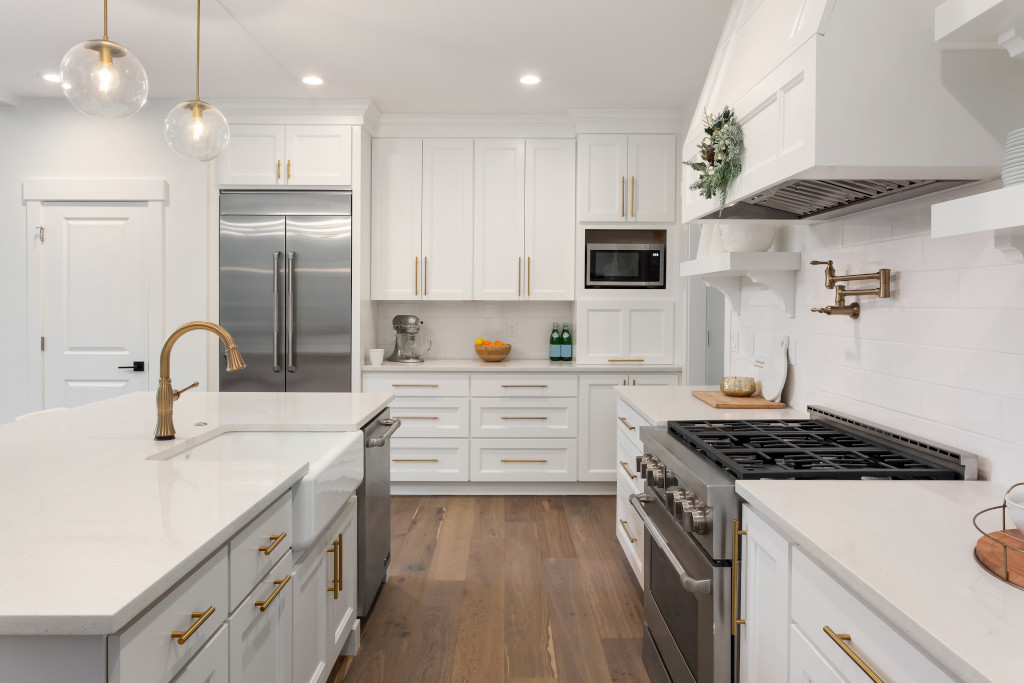 Before
Before
Designer Kelly Guinaugh of Interior Enhancement Group was enlisted for the task of updating a couple’s suburban Chicago kitchen shortly after completing a new kitchen for the same clients in their Florida home. The clients wanted a kitchen that would feel as airy and spacious as their vacation home, with improved workability, increased storage and better traffic flow.
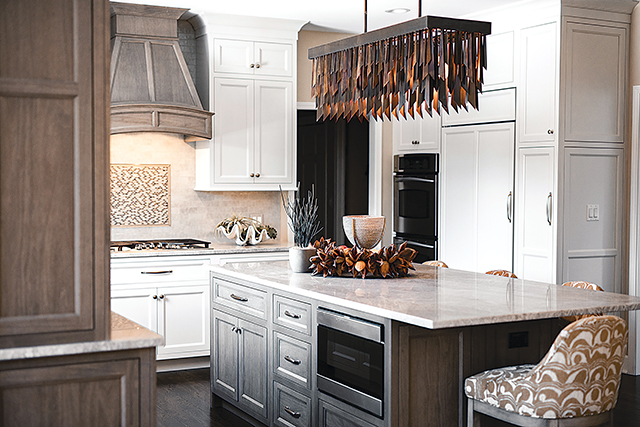 After
After
By widening the entryway from the kitchen to the dining room, Guinaugh was able to create a feeling of spaciousness in the 350-sq.-ft. kitchen. New full-height pantries and cabinetry, as well as a wine cellar, were installed in order to provide plenty of storage. Increasing the width and height of the window over the sink also provided plenty of natural light to make the room feel open and fresh, while removing all soffits and installing taller upper cabinetry created the illusion of higher ceilings. A new, narrower island provides improved traffic flow and facilitates entertaining, and also features increased seating facing the scenic back yard. The end result: a fresh transitional space that flows well into the dining room and great room.
The post Kitchen Displays Fresh, Transitional Style appeared first on Kitchen & Bath Design News.
Did you miss our previous article…
https://www.conduithardware.com/?p=288
Showplace Cabinetry Completes $2.5M Expansion
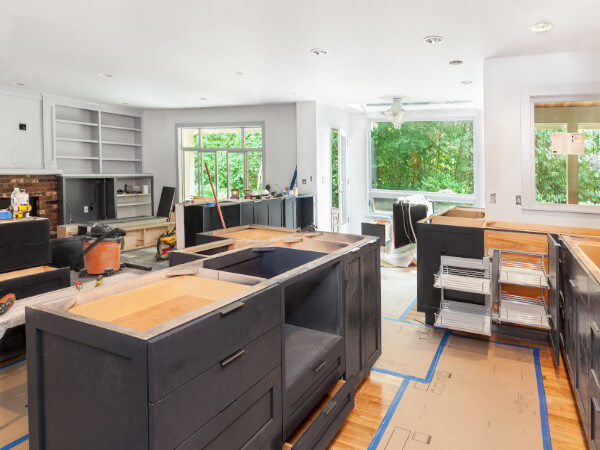
HARRISBURG, SD — Showplace Cabinetry, the Harrisburg, SD-based cabinet supplier, has completed a 16,800-sq.-ft. project linking its two manufacturing plants, the company announced.
The $2.5-million expansion provides a central shipping point for Showplace’s framed cabinetry and frameless cabinet lines, as well as enhanced warehousing and transportation efficiencies companywide, company officials said, adding that the project effectively increased Showplace’s production capacity by 30%. The project also streamlines logistics and handling, increasing shipping capacity for the company and creating a more efficient order flow from production to transportation.
“Demand is up for all our cabinetry lines,” said Bill Allen, Showplace Cabinetry president and CEO. “That demand required us to find an innovative solution to improved logistics and enhanced ShowplaceEVO production. The new warehouse and shipping link solves both challenges.”
“This new expansion gives us the space we need to take our quality production and customer service to the next level,” Allen observed.
The post Showplace Cabinetry Completes $2.5M Expansion appeared first on Kitchen & Bath Design News.
Did you miss our previous article…
https://www.conduithardware.com/?p=285
What Story Are Your Financials Telling?
I have always had a burning desire to know how my business measured up to industry peers. Were we above average, middle of the pack or a bottom feeder?
Years ago, while moderating a workshop at KBIS, the workshop presenter invited me to join an industry-specific peer group that he was facilitating. Sensing this is where I could gain some perspective about my business, I accepted the invitation.
My first meeting had me sitting around a boardroom table with owners of eight other kitchen and bath businesses from different geographical areas. The format was simple: sharing information, issues and challenges, and poring over each other’s financial statements.
I arrived at this meeting confident, perhaps even a bit cocky; I knew my numbers. The feeling didn’t last. My peers were starting to ask rapid-fire questions about the financials. I found myself struggling to provide satisfactory answers. Embarrassment and insecurity quickly replaced confidence.
That experience taught me several things. Primarily, I need to spend more time with the financials to understand the relationship between the numbers and the information revealed, and that most kitchen and bath dealers/owners don’t fully understand the importance of their financial statements. The latter is because most have grown up on the design and selling side of the business.
As a business owner, it’s critical to comprehend and own the financial side of the business; otherwise, you may never realize the company’s full income and profit potential. While accountants and bookkeepers play an essential role, it’s the role of owners to learn the meaning of these financial statements and determine what should be done to improve company performance.
So, a little primary education in this arena will set the stage for understanding the crucial values derived from knowing what your financial statements are saying about the state of your business.
The Difference in Financial Statements
Financial statements are divided into three categories: Income Statement (also known as a Profit and Loss Statement), Balance Sheet and a Cash Flow Statement.
An Income Statement measures your company’s financial performance in the current year. It’s measured by how much revenue (sales) has been recorded versus how many expenses have been incurred to generate that revenue level; the difference – revenue minus expenses – is called Net Profit.
A Balance Sheet measures your company’s cumulative performance since the inception of the business. It’s measured by how many assets you have acquired over these years minus the liabilities incurred in the process; the difference (Assets – Liabilities) is called Net Worth. The net worth is derived from several components: initial capital, retained earnings and the current year’s net profit, which is the common link between the Income Statement and the Balance Sheet in any given year.
Cash Flow Statements provide a summary of how cash enters and leaves the company. It measures how well a business manages its cash. Cash is king. Cash is the lifeblood of any business, and how well it’s being managed needs to be documented.
Cash and Accrual Accounting
There is a significant difference between cash and accrual accounting, and not knowing the difference and its impact on a business can lead to severe consequences. The main difference between the two types of accounting is when revenue and expenses are recognized and recorded.
Cash Accounting records revenue when cash is received. A 50% down payment on a newly signed kitchen would show up as revenue on the income statement. With no expenses to record yet, the financials could reveal a sizable net profit. The pitfall for this kind of accounting is that it might overstate the health of the business. Under this scenario, the company could be cash-rich, lulling the owner into a false illusion that the business is profitable when in reality, the business may be losing money.
Accrual Accounting recognizes and records revenue when it is earned. Revenue recognized upon delivery of a product or service aligns with the associated expenses and services provided.
The accrual method provides a more accurate picture of the business’s overall health by including all revenue when earned and all expenses when incurred. This more accurate financial data places an owner in a better position to make sound business decisions and limits the risk of overpaying taxes.
Managing by Percentages
Managing a business by reviewing and looking at strictly numbers can be challenging. It can be easy to overlook a change in revenue or an increase in expenses when focused primarily on the numbers – or, worse, not knowing what the numbers mean. It also makes it difficult to compare one financial statement to another or understand the changes occurring over time.
A more straightforward method to manage is inserting a column into a financial statement where any line item amount is expressed as a percentage of the overall net revenue. Total revenue is listed as 100%, and cost of goods, gross profit and all other line items are expressed as a percent of the total revenue. This method makes it easier to analyze the performance of a business over time and compare it with peers or industry benchmarks.
Benefits of Knowing Your Financials
Your financials tell a story about your business, what is occurring at the moment, and a telling tale about your organization’s history. It’s important to be adept in reading, interpreting and using your financial statements as a guide to making wise business decisions.
There are many benefits to being financially savvy. First, you can protect yourself from possible embezzlement. Placing all your trust in a bookkeeper without having financial know-how creates exposure that is often hard to overcome.
Second, you can better measure your financial performance against others in a group, identifying weaknesses where your business can improve. Third, you can ask better questions of professionals so you can secure better advice. Fourth, you can set more intelligent and realistic goals. Fifth, you can furnish more confident leadership, attracting and retaining quality personnel. And sixth, knowing the financials like you know the designing of kitchens can make you a lot more profit!
Commit to gain a deeper financial understanding of your business. Invest in yourself to learn the financials, and the story conveyed. Financial knowledge comes with reward – realizing the full profit potential of the business and leveraging it appropriately. 
Dan Luck owns Bella Domicile in Madison, WI. He has been an SEN Member since 2002 and has led the SEN Leadership Team since 2018. Visit sendesigngroup/education for more information. Dan welcomes
questions and comments at [email protected].
The post What Story Are Your Financials Telling? appeared first on Kitchen & Bath Design News.
Did you miss our previous article…
https://www.conduithardware.com/?p=282
Homeowners Seeking Functionality, Style
NEWPORT NEWS, VA — As the nation approaches the year-and-a-half mark of the COVID-19 pandemic, homeowners continue to reevaluate their living spaces, “with many looking for ways to put the ‘home’ back in a more functional house.”
That’s the key conclusion of a major new consumer survey conducted by Ferguson Bath, Kitchen & Lighting Gallery in an effort to better understand how the global public-health crisis impacted trends in home renovation and updates. The survey, fielded this spring on behalf of Ferguson by G&S Business Communications, involved some 1,100 U.S. adults aged 18+, according to the Newport News, VA-based distributor of plumbing, lighting and related products.
The Ferguson survey, whose results were released in July, found that 64% of Americans made an update of some kind to their home, or to a room in their home, during the pandemic. The most popular reasons for the update included being tired of the home’s current style (34%) and needing to make changes for better functionality (32%), Ferguson reported.
The kitchen (47%) and the bathroom (44%) were the top choices when it comes to specific areas of the home people would want to redesign or upgrade based on spending more time at home during the COVID-19 pandemic. A growing number of Americans say they would want to redesign or upgrade their outdoor space (30% in 2021 compared to 23% in 2020), Ferguson reported.
Interestingly, the room people spent the most amount of time in last year compared to previous years was the living room (50%), with 33% of Americans working from home in their living rooms during the pandemic. A third (33%) spent more time in their bedrooms and nearly a third (32%) spent more time in the kitchen. Younger generations were more likely than older generations to say they spent more time in the bedroom and bathroom, but just as likely to say they spend more time in the living room.
“There are likely a number of reasons why the living room grew in importance over the past year, since it was used as a gathering place during quarantine, for home schooling and other activities,” Ferguson reported. “We may also see this trend, in part, because people who work from home often set up their workstation in their living rooms.”
Just over a third of respondents (34%) said they started working from home during the pandemic, Ferguson said. Within this group, a third said they have been working in the living room and a third have been working from an existing office, the company added.
Among other survey findings:
- Among those who started working from home during the pandemic, 62% made changes to their lighting in their home office space. Americans prioritized functionality over aesthetics when changing lighting in these spaces. Twenty-eight percent changed their lighting to see their work/computer better, and 22% changed their lighting to look better on video.
- Americans also spruced up their office space in general during the pandemic, creating a more multifunctional space. Eleven percent put a coffee maker in their office and 10% installed a refrigerator to hold coffee creamer, water and other beverages for easy access.
- Nearly half of Americans say they would buy smart home products to make their lives easier (49%), while others say they would buy them to save time (32%) or to improve the energy efficiency of their home (31%).
- As an example of the desire for convenience and hygiene, 41% of surveyed Americans say they would like touchless faucets in their home. Almost a third (32%) would like a refrigerator that notifies them when the door has been left open. And although bidets haven’t traditionally been standard in America, 17% of Americans say they would like a bidet in their bathroom and 26% would like a bidet seat. A quarter (25%) said they want a smart toilet. Younger generations, not surprisingly, are likely to want these products and features (see graph above).

The post Homeowners Seeking Functionality, Style appeared first on Kitchen & Bath Design News.
Did you miss our previous article…
https://www.conduithardware.com/?p=279
Obstacles Linger, Even in Face of Uptick

Supply side challenges continue to hamstring both new housing and the residential-construction trade, even as both market sectors continue to exhibit significant 2021 gains. Among the key statistics and forecasts released in recent weeks by government agencies, research firms and industry-related trade associations were the following:
HOUSING STARTS & NEW-HOME SALES
Despite recent gains in housing production, concerns linger over weakening permit numbers, a slowdown in new-home sales and rising materials costs, the National Association of Home Builders said. Overall housing starts were pegged at a seasonally adjusted annual rate of 1.64 million units, according to the latest available figures, as strong demand helped offset supply-side challenges. Builders continue to contend with rising home prices and materials delays, as well as with shortages of buildable lots, a dearth of skilled labor and a challenging regulatory climate, said Robert Dietz, NAHB chief economist. “The weakening of single-family and multifamily permits is due to higher material costs, which have pushed new home prices higher since the end of last year,” Dietz said. “This is a troubling sign for future housing production (and) a challenge for a housing market that needs additional inventory.”
RESIDENTIAL REMODELING
Residential construction professionals experienced their busiest quarter since at least 2015 in the first three months of 2021, with confidence among remodeling construction and design firms running high, according to Houzz Inc. The online platform for home remodeling and design reported positive results for its “Q3 2021 Houzz Renovation Barometer,” a quarterly gauge of residential renovation market expectations, project backlogs and recent activity among businesses in the construction, architectural and design services sectors. However, the heightened activity is not without challenges, according to Houzz, which reported that supply chain delays, extreme weather patterns, rising product and material costs and labor shortages “continue to create major headwinds for the industry.” In a related development, annual gains in homeowner improvement and maintenance spending are poised to accelerate in the second half of 2021 and remain elevated through mid-year 2022, according to the Leading Indicator of Remodeling Activity (LIRA), released in by the Remodeling Futures Program at the Joint Center for Housing Studies of Harvard University. The LIRA projects that annual growth in home renovation and repair expenditures will reach 8.6% by the second quarter of 2022, with annual expenditures expected to exceed $380 billion.
EXISTING-HOME SALES
Existing-home sales, despite several months of declines, were up 22.9% from a year ago, and available supply has improved in recent months due to gains in housing starts and existing homeowners listing their homes, the National Association of Realtors reported. “Home sales continue to run at a pace above the rate seen before the pandemic,” said Lawrence Yun, chief economist for the Washington, DC-based NARI, which pegged the latest seasonally adjusted annual rate for resales at 5.86 million units. Total inventory was down 18.8% from a year ago, while unsold inventory is down year to date, from 3.9-month supply in 2020 to a 2.6-month supply at the same time this year, the NAR added.
APPLIANCE SHIPMENTS
Reflecting gains in new construction and residential remodeling, domestic shipments of major home appliances continued their rebound from the impact of COVID-19 in the first half of 2021, the Association of Home Appliance Manufacturers reported. According to the Washington, DC-based AHAM, an April-to-June spike of 23.7% over the same quarter a year ago was largely responsible for an overall year-to-date gain of 26.6% in major appliance shipments compared to the same six-month period in 2019. First-half gains were posted in all key product categories, including food preservation (+31.6%), home laundry (+27.7%), cooking (+24.1%) and kitchen cleanup (+17.4%), AHAM noted.
The post Obstacles Linger, Even in Face of Uptick appeared first on Kitchen & Bath Design News.
Did you miss our previous article…
https://www.conduithardware.com/?p=276
Re-Bath Parent Acquired by Private Equity Firm
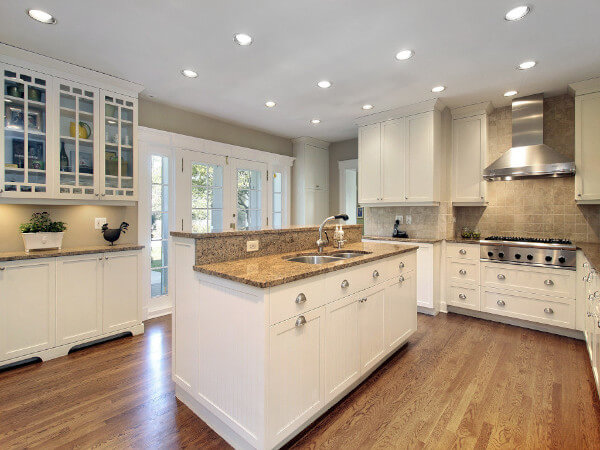
PHOENIX — Home Brands Group Holdings Inc., the parent holding company of Re-Bath, the nation’s largest bathroom remodeling franchise, has been acquired by TZP Group LLC, a New York-based private equity firm, and a group of co-investors, the company announced. Financial details of the transaction were not disclosed.
“We are thrilled to partner with Re-Bath and its terrific management team, serving a group of committed franchisees across the U.S.,” said Vlad Gutin, a partner at TZP.
“Re-Bath complements our growing portfolio of leading consumer brands (and) we believe that Re-Bath’s unique, high-quality service offering, loyal customers, best-in-class products of leading brands and partnerships with premier, national retailers, coupled with TZP’s relationships and resources, can accelerate Re-Bath’s growth,” Gutin added.
Re-Bath, headquartered in Phoenix, operates more than 100 locations across North America, according to the company, which offers complete bathroom remodels, tub and shower updates, plus aging and accessibility solutions.
“We are excited to embark on our next chapter of growth with TZP’s investment representing a strong validation of the growth and success we’ve achieved and where we are headed,” said Re-Bath CEO, Brad Hillier. “Through this investment, we will be able to leverage TZP’s expertise and resources to further expand our brand to a wider audience and better serve our customers, franchisees, partners and employees.”
The post Re-Bath Parent Acquired by Private Equity Firm appeared first on Kitchen & Bath Design News.
Did you miss our previous article…
https://www.conduithardware.com/?p=273
Different Approach Delivers Local Vibes
San Francisco, CA — When you hear that your clients recently moved from Japan after having lived in Tokyo for two decades, it might seem logical to incorporate Asian influences into the renovation of their home to make them feel comfortable. However, Jeni Gamble knew they wanted a different approach.
“There would be no bamboo, no shoji,” says the founder/creative director and LEED AP/NCDIQ at gamble + design in San Francisco, CA, who worked in collaboration with Arrow Builders to remodel this home in the Presidio Heights neighborhood of San Francisco. “That would have felt too contrived. Instead, they were interested in learning more about their new city and creating a home that reflected that area. They also wanted to keep the renovation within the community, so they were also very interested in meeting and working with local artisans who could show them something new.”
Subtle, carefully crafted details
With a sophisticated design eye, Gamble’s clients wanted to transform the previously gaudy and heavily ornamented home into one that showcased a pared-down elegance and serenity imbued with subtle, carefully crafted details and custom pieces from California artisans.
“The home previously had a ton of layered ornamentation,” says the designer. “That may be okay for an old historic home. But for my clients’ home, with its more modern architecture, it just didn’t make sense. So, we stripped away the applied finishes and brought the home back to its original architecture.”
As such, gone was the hodgepodge of random, highly patterned tiles that made up the kitchen’s backsplash. Gone, too, was the painted blue floor – which was stripped and returned to its natural walnut state – as well as the overabundance of matching blue elements that overtook the room.
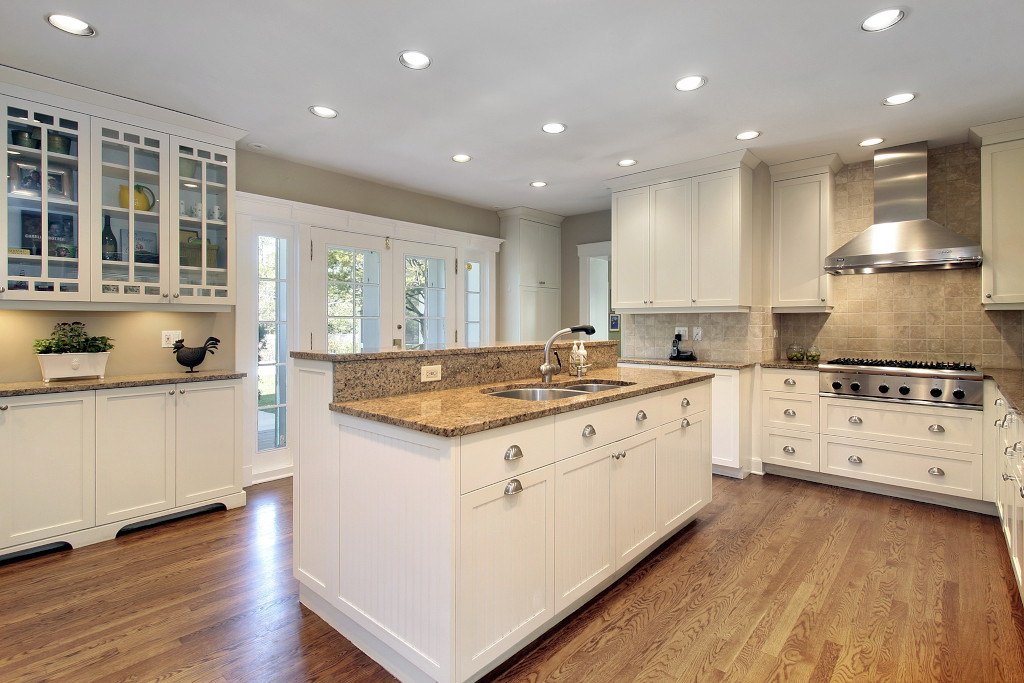
Jeni Gamble included materials and finishes that provide texture and depth, such as the Jura limestone countertops and custom white oak cabinetry that reinforce the feeling of nature. To highlight local artisans, she accented the cabinetry with custom knobs and pulls crafted by Marin County’s Alice Tacheny.
In their place, Gamble brought in materials and finishes that provide texture and depth, such as the Jura limestone countertops that reinforce the feeling of nature, along with the custom white oak cabinetry from local cabinet maker Bachmann Woodworking.
“We love working with white oak,” says Gamble. “It’s a staple for us because of its density. We also love it because it has a very fine grain pattern, which offers warmth when allowed to show through the stain. Often, we play with stain, but for this kitchen, rather than allowing the wood to take on a yellow cast, we purposefully lightened it to control the color palette. We also carried the oak throughout the rest of the home, using it for the dining room table as well as the staircase.”
The designer accented the lightened cabinetry with end panels and frames for the tall cabinetry, painted with Farrow & Ball’s deeply hued Hague Blue paint.
“Blue was everywhere in the previous kitchen,” she says. “Our clients do like blue; they just didn’t want so much of it, so we toned it down. The blue color also serves as a ‘bookend’ for the cabinetry. I often like to bookend, or sandwich, elements to give them a beginning and an end. Sometimes I use different materials or finishes. In this case,
I used the blue paint.”
Gamble also used the dark shade to draw attention to the custom niche she created within the refrigerator/pantry wall.
“We like to incorporate niches into our designs that can be used as coffee or tea stations,” says the designer. “They have become a signature feature for us. Carving out a space that can be used specifically for this purpose helps keep the counter clear so it doesn’t get cluttered. Often, people’s favorite part of the day is their coffee, so we like to celebrate it!”
To fulfill the desire to highlight local artisans, Gamble accented the cabinetry with custom knobs and pulls, crafted by Marin County’s Alice Tacheny. The blackened metal is on-trend with current kitchen design and matches the MGS Black Steel faucet and trio of peninsula pendants from Michael Anastassiades’ Brass Architectural Collection.
Outdoor Sanctuary
While the living room offers views of Presidio and the Golden Gate Bridge, the kitchen grants glimpses to the homeowners’ outdoor living space. Patio doors provide physical entry to the barbecue/seating area, while their transparent glass offers visual access to a large painted mural of a mountain range. Boasting calming shades of grays and whites, the mural also serves as artwork for the kitchen and gives the homeowners some privacy from their neighbors.
“Having a kitchen adjacent to an outdoor space is always coveted,” indicates Gamble. “For these clients, their outdoor courtyard is sheltered for barbecuing and is quickly accessible from the kitchen prep area.” 
The post Different Approach Delivers Local Vibes appeared first on Kitchen & Bath Design News.
Did you miss our previous article…
https://www.conduithardware.com/?p=269
Cabinets Plus Changes Name, Expands Franchise Effort
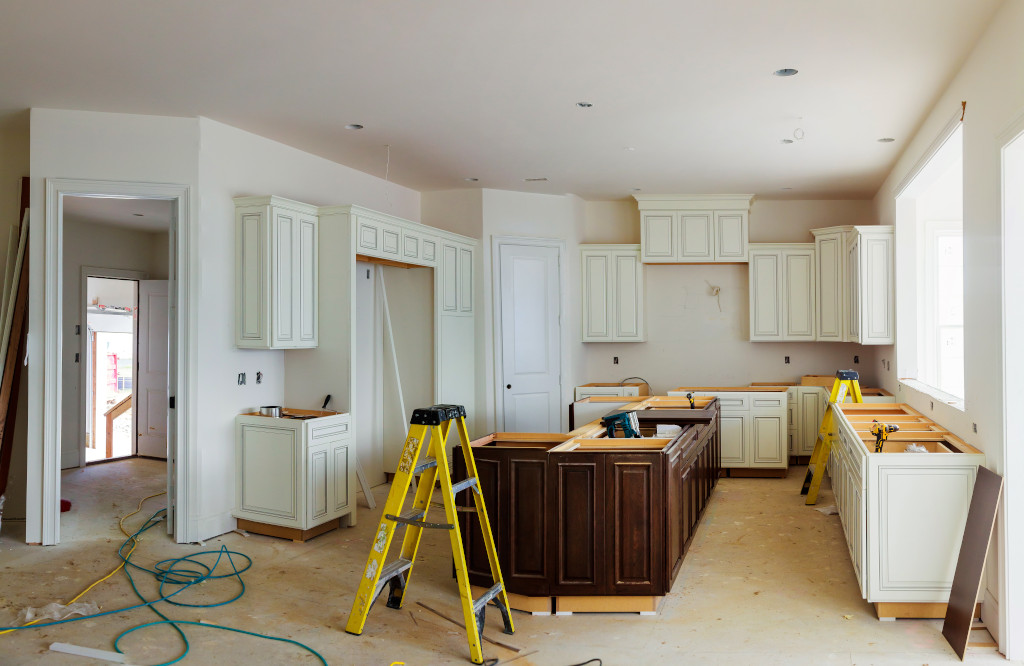
AUSTIN, TX — Cabinets Plus USA, the kitchen-related franchising operation headquartered in Austin, TX, has changed its corporate name to Cabinet Q as part of a nationwide expansion effort.
The expansion initiative, which launched last month, will enable the newly named Cabinet IQ to rolling out its franchise program, replicating its business model nationwide, the company said.
“The Cabinets Plus USA brand has been a robust and fast-growing fixture in the Austin, TX area (and) has become well known for its step-by-step system to provide quality, service and design in kitchen and bath remodeling,” said company owner Michael Hartel. “Strong demand for services has spurred our growth, and this name change better reflects our position as the most innovative cabinet and kitchen remodeling company, and now franchise opportunity.”
The rebranding does not affect any existing orders or projects, the company said, adding that corporate ownership, billing address, shipping addresses and invoicing information remain the same.
The post Cabinets Plus Changes Name, Expands Franchise Effort appeared first on Kitchen & Bath Design News.
Salone Showcases Design
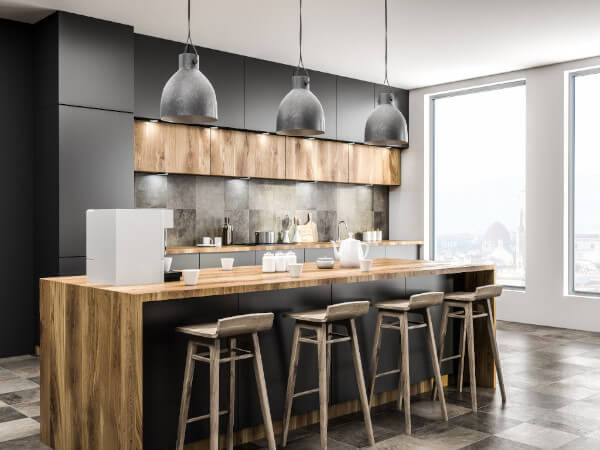
A special, abridged version of Salone del Mobile.Milano took place last week, amid much fanfare at its return and trepidation amid COVID-19 concerns. The safety of visitors was paramount, with all exhibitors and attendees adhering to protocols at all times, and an abbreviated show floor that often resembled an art gallery, with products hung on walls and shown in unique displays to keep visitors moving and at a safe distance.
“supersalone” did not disappoint, with more than 60,000 people attending the six-day show, which opened with an impromptu visit and remarks from Italian President Sergio Mattarella welcoming guests and 425 exhibitors, who showcased everything from opulent tables and chairs to modern cabinetry and lighting.
Up-and-coming trends were seen throughout the space. Kitchen cabinets sheathed in metal and metallic looks and a wide range of wood tones, and included complementary metal and glass shelving units. Disappearing kitchens were also displayed, with sliding countertops that tuck everything neatly away when not in use.
Faucets reflected a range of geometric shapes, and delivered on the desire for customization with changeable handles and a multitude of finishes that went far beyond the metals of the past. And LED lighting is revolutionizing the shape and size of pendants, sconces and chandeliers, delivering intricate shapes and modern vibes. LED lighting are also prominent in kitchen and closet shelving and interiors, and even in faucet spouts and showerheads.
Following are a few of the products that made a statement during the event.
The post Salone Showcases Design appeared first on Kitchen & Bath Design News.
Did you miss our previous article…
https://www.conduithardware.com/?p=261